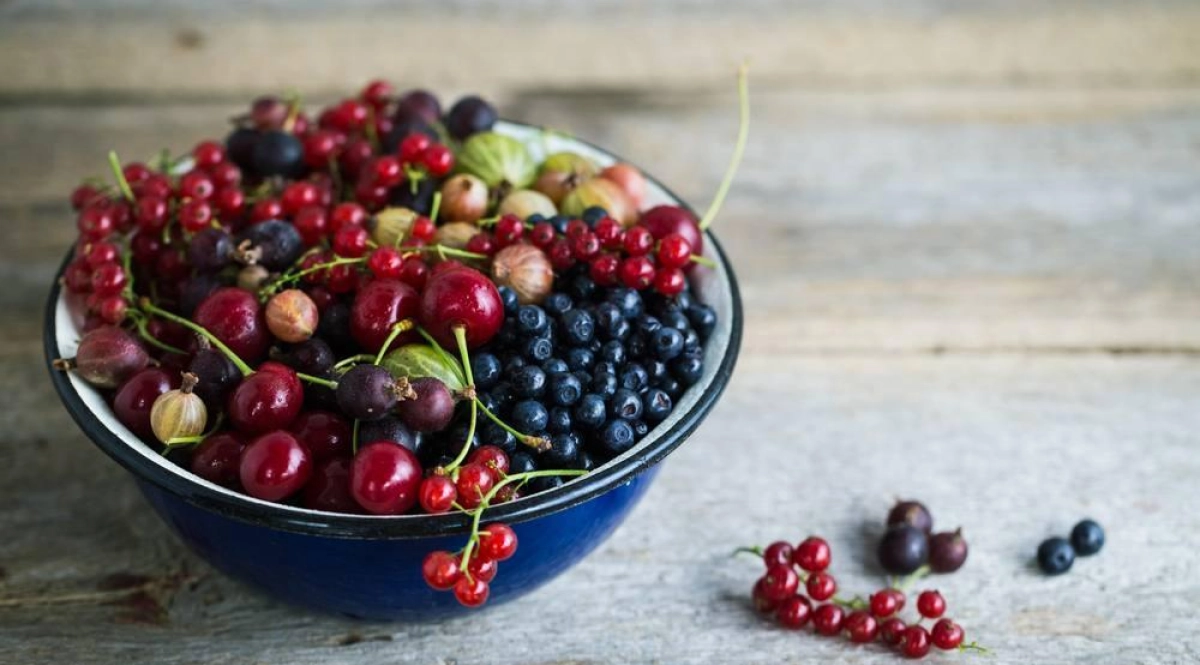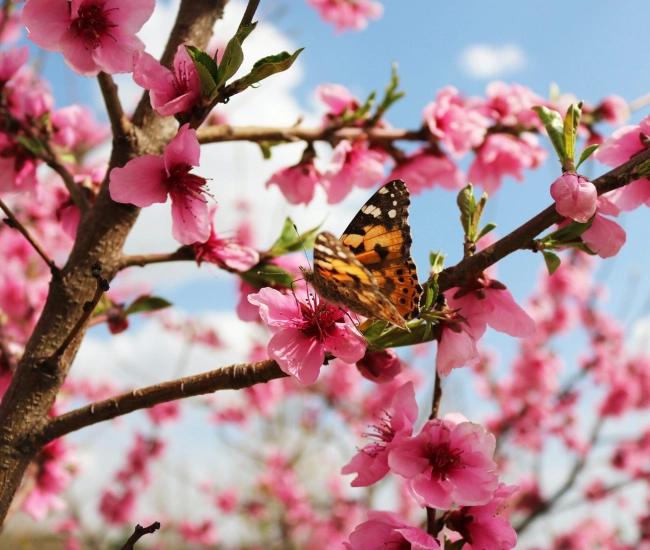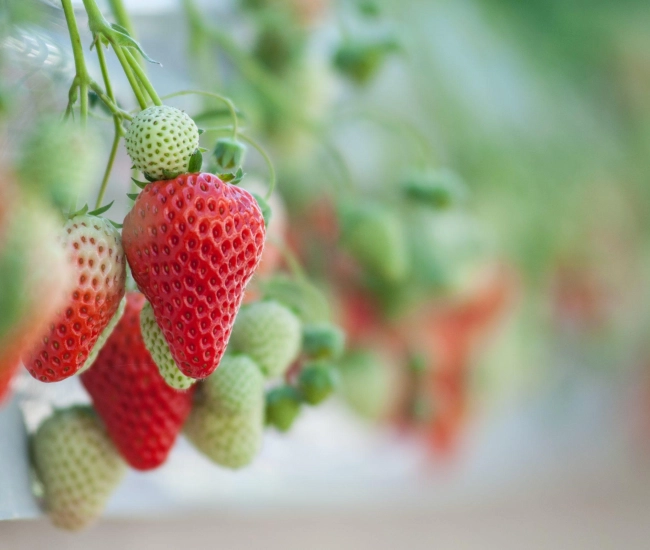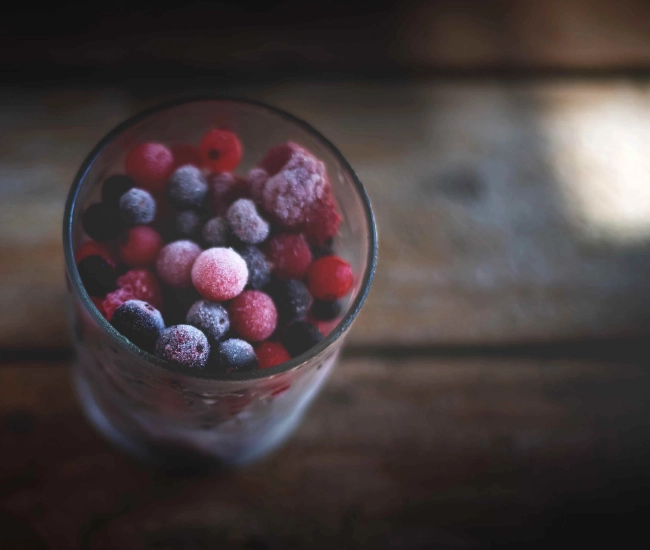
The cultivation of small fruits is not as widespread as that of herbs and vegetables. To assist you in their cultivation, we have prepared a small, effective guide with practical advice on planting and maintaining the most common small fruits.
Dwarf and Corymb Blueberry
Planting Tips
Dwarf blueberries should be planted deeply, burying the stem 5 to 7 cm deep, which encourages the formation of rhizomes. Four plants will easily cover 1 m² or more, while a corymb blueberry will occupy 1 m² depending on the variety.
Maintenance
To succeed in growing a blueberry patch, you need soil with a pH of 4.5 (maximum 5.5), which is achieved with a mix of peat and sand.
Ever-bearing Strawberry
Planting Tips
Generally, it is advisable to grow strawberries in large pots and fertilize them regularly all summer long.
Maintenance
In the fall, they should be planted in the ground with a good mulch or sheltered in a snow-protected area. A mulch on the ground and protective fabric will allow them to be preserved for the following year. They like magnesium and iron.
Traditional Strawberry
Planting Tips
Create a small raised bed so that water drains quickly during the spring snowmelt. Note: do not bury the crown during transplantation. Strawberries can be planted on plastic mulch, which simplifies maintenance. The spacing distance is 45 to 60 cm in the row. Renew the plants every 4 to 5 years.
Maintenance
Take advantage of Halloween to buy straw that you will spread over the strawberries when the ground is at -5°C. You can also use leaves.
Raspberry
Planting Tips
It is best to prepare the ground the year before planting so that the soil is well weeded. Weeds and raspberries do not mix well. Use one plant every 50 cm or so. It takes 2 or 3 years for a good harvest.
Maintenance
Pruning is simple: after harvest, cut all the stems that have produced fruit down to ground level. Then, keep only a maximum of 10 new shoots per linear meter. Apply 10 to 15 cm of compost on the soil in the fall. This will protect the roots and control weeds.
Red Currant, Cluster Currant, and Large Fruit Currant
Maintenance
It takes 3 years for a good harvest.
Pruning involves only removing old branches and poorly placed branches by cutting them as close to the ground as possible. If you do not dare to do it, it is better not to cut anything. Planting distance is 1 to 1.5 m in all directions.
Mulberry
Planting Tips
Thornless mulberries are fragile, and if you injure them, the main stem will produce new shoots full of thorns. You need to plan space, as the stems can grow several meters in one season.
Maintenance
To achieve a large harvest, do not prune the stems and protect them well from winter cold. Flowers appear on the wood from the previous year.
Rhubarb
Planting Tips
Rhubarb does not like being moved. If well transplanted, it grows quickly if it does not lack water. It is divided in September. It should be rejuvenated every 7 to 10 years.
Maintenance
It tolerates partial shade but prefers full sun. It is sometimes recommended to cut the flower stalk, but this is not necessary if the plant is well fertilized and watered.
Grape Vine
Planting Tips
Walls and pergolas facing east and south are favorable for installing grapevines. They must first be tied, then the shoots will take hold of the trellis. The "Eona" cultivar is well-suited as a permanent covering plant on a pergola. The vine creates shade, providing coolness and unparalleled aesthetic quality. It will produce some grapes if exposed to winter cold, as several buds will be destroyed without compromising the vine's growth. However, for a larger production, ensure the plant can be laid on the ground to receive light winter protection.
Maintenance
Spring Pruning: The idea is to keep the new stems that grew the previous year and reinstall them without reducing them. As for the stems that bore clusters, prune them back near the ground to the second eye. From this point, 1 or 2 vigorous regrowths will become the fruit-bearing stems, which will, in turn, be pruned back to the second eye. Remember that clusters are born on stems that grew the previous year. Significant pruning eliminates all chances of harvest.
Summer Pruning: When the young clusters are formed, at the end of June or early July, reduce the length of the cluster-bearing shoots. Simply keep 2 clusters, then the following 2 leaves. Cut the stem between the second and third leaf. The idea is to control vegetation. This operation must be repeated before the clusters ripen. Under no circumstances should you reduce the new shoots that do not bear clusters.
Tips and advice



